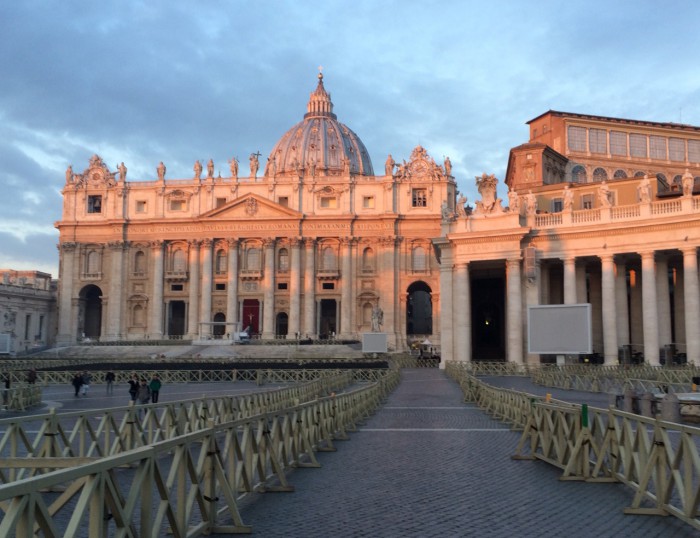10th December 2015
Entering the Holy Door of Mercy


Pope Francis formally inaugurated the Holy Year of Mercy in Rome when he opened the Holy Door at St Peter’s Basilica on 8 December. He was the first through the Door, followed by Pope Emeritus Benedict XVI and the assembled throngs of cardinals, bishops and clergy. We diplomats were also fortunate enough to be allowed to enter through the Door as well, as you might have seen from our live tweets sharing this experience.
But for those pilgrims making their way to Rome, planning to enter through the Holy Door of St Peter’s, what are the practical arrangements? I decided to follow the procedure to find out.
Pilgrims planning to go through the Holy Door of St Peter’s should make a reservation on-line, through the official web-site www.im.va (under Pilgrim Registration). It is a three stage process – in the first you are asked for the name of the group, where you are from and contact details for group leaders (these pages are in Italian but is fairly easy to work out – the UK is under “Regno Unito”). People travelling on their own should register under “singolo”. The second stage will ask you to set a password, and the third will give you the option to reserve a date and time (either morning or afternoon). At each stage you will be sent an e-mail with details to move on to the next page. After completing the third stage, you will receive an e-mail a day or so before to give the exact time of start – make sure that you print off this ticket. All this is only for the Holy Door at St Peter’s – when the other Basilicas (St John Lateran, St Mary Major and St Paul’s Outside the Walls) open their doors, there will be no need to reserve ahead of time.
If you have not booked before arriving in Rome, there is an office open at Via della Conciliazione 7 where you can make reservations.
The entry to the pilgrimage is in front of Castel Sant’Angelo, and there is a walkway down Via della Conciliazione to the edge of St Peter’s Square. Look for the volunteers in their yellow bibs who can guide you in the right direction. You will have to show your reservation and you may be asked for identification, so please make sure that you have it to hand. Once you get to St Peter’s Square there is another check of the reservation and identification, then you are directed to the metal detectors (I suggest that you think of it as similar to the airport – do not take large bags or liquids through). After that it is a straight walk through the Square along the path which takes you directly to the Holy Door.
If you want a permanent record, you can get a testimonium from the office at Via della Conciliazione 7 after the pilgrimage. This appears to be the only place which is authorised to issue them.
It is interesting how people approach the Holy Door in different ways. Some stand for a few seconds in quiet contemplation, some groups go through singing, some kiss the Door or the crosses affixed to the sides. It is a very personal moment. As Pope Francis said at yesterday’s General Audience, “mercy can really contribute to building a more human world”.

Me and my two sister want tickets for the closing ceremony of holy door in November 2016 in Rome to witness mass how can we get the tickets please
Thanks be to god and praise the lord Jesus christ all the time.
Fantastic I hope to be out with our Diocese later in the year but it just highlights the significance of what you are doing amny thanks for this